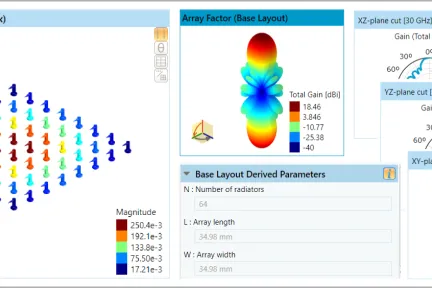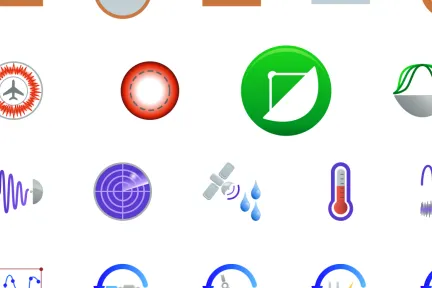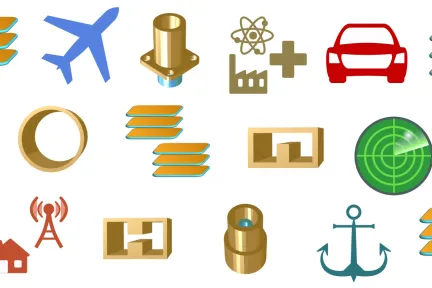Antenna Magus
Antenna Design Software
What is Antenna Magus?
Antenna Magus is a software tool for the acceleration of the antenna design and modeling process. Export validated antenna models from a huge antenna database of over 350 antennas to CST Studio Suite®.
Antenna Magus has proven to be an invaluable aid to antenna design engineers and to anyone who requires antenna models for antenna placement or electromagnetic interference studies. An engineer can make a more informed choice of antenna element, providing a good starting design and thus increasing efficiency.
- Explore
- Design
- Export
- Knowledge Management System
Explore Antenna and Array Design Alternatives
Whether starting with a new design or updating an existing system, most antenna engineers start with a familiar antenna element. Antenna Magus makes it easy to explore alternative options.
Often it is only after the attempt to adapt and optimize an existing antenna element has failed to meet the new specifications that the engineer starts to consider other elements. Often, one of the first elements considered becomes the de facto choice, because too much time has been expended on the element choice and the "cost" to start over with a new element is too high.
To meet the need for rapid assessment of many antenna elements, Antenna Magus structures antenna information in a standardized format, making it easy to compare different elements. Unlike most literature, Antenna Magus highlights the unique and general characteristics of each antenna. It is easy to compare antennas with each other and, more importantly, to compare them with the given requirements.
Design and Modeling
When designing an antenna for the first time, there are some elementary steps to complete before continuing with the distinctive (non-standard) part of the design process.
If you know where to start the design process, the elementary steps can be trivial, but often, the starting point is not that well defined. Published papers or books frequently have insufficient information to reproduce reference designs and good reference results are not available. The lack of information results in days spent manually optimizing a basic antenna structure in an attempt to get the general performance within the specification.
Antenna Magus takes care of this sometimes tedious exercise by offering reliable first-order designs that have been validated against reference data. Each antenna is thoroughly researched and design algorithms undergo various tests and validation routines to confirm that they work properly for a wide range of goal combinations.
Engineers can design antennas for specific objectives like gain, bandwidth and impedance at the push of a button.
Estimate the performance
The "Estimate performance" feature enables quick analysis of the designed antenna to give an indication of whether an element is a suitable candidate for the final design.
Because of the knowledge of the topology and the environment of the antenna, Antenna Magus can make certain approximations, which can shorten analysis time while still giving reasonable estimated performance results.
Export to 3D Simulation
The export functionality in Antenna Magus allows more time for antenna design and less time on mastering simulation software. You can test novel concepts and design ideas quickly. Starting from "ready to run" parametric simulation models exported from Antenna Magus, users can apply the capabilities offered by the supported 3D electromagnetic (EM) simulation tools more effectively. Model combination can realize new topologies rapidly.
Knowledge Management System
Efficient information management affects the bottom line of all companies, because it gives employees access to already developed knowledge.
Before Antenna Magus, there was no information management system designed specifically for antenna engineers. The engineers had to store critical information in stacks of papers, on CDs/DVDs or physical prototypes somewhere in a dusty store room. This knowledge represents years of experience and work - but was not accessible or sharable.
While creating Antenna Magus, it was necessary to create a knowledge management system to manage all of this information in a consistent manner. This feature provides engineers with a framework to store information like documents, sketches, design algorithms, measured data and models in a logical, accessible way. The framework of the knowledge management system is consistent for all antennas in the database, which makes it easy to find information and compare different antennas. As engineers gain more knowledge of a specific antenna, they can extend and improve available information. Once you have captured the information, you can share it securely among colleagues or friends.
Antenna Magus Components
FAQ About Antenna Design Software
Antenna designs generated in Antenna Magus can be exported as CST Studio Suite project files. These files include the 3D antenna geometry and also have predefined simulation settings, allowing users to immediately run full-wave 3D simulation and optimization without the need for further set-up.
The Antenna Magus Learning Edition is a free version of Antenna Magus specially designed for students. It includes 12 common antenna models and can export models to CST Studio Suite and the CST Studio Suite Learning Edition for further study.
Also Discover
Learn What SIMULIA Can Do for You
Speak with a SIMULIA expert to learn how our solutions enable seamless collaboration and sustainable innovation at organizations of every size.
Get Started
Courses and classes are available for students, academia, professionals and companies. Find the right SIMULIA training for you.
Get Help
Find information on software & hardware certification, software downloads, user documentation, support contact and services offering





